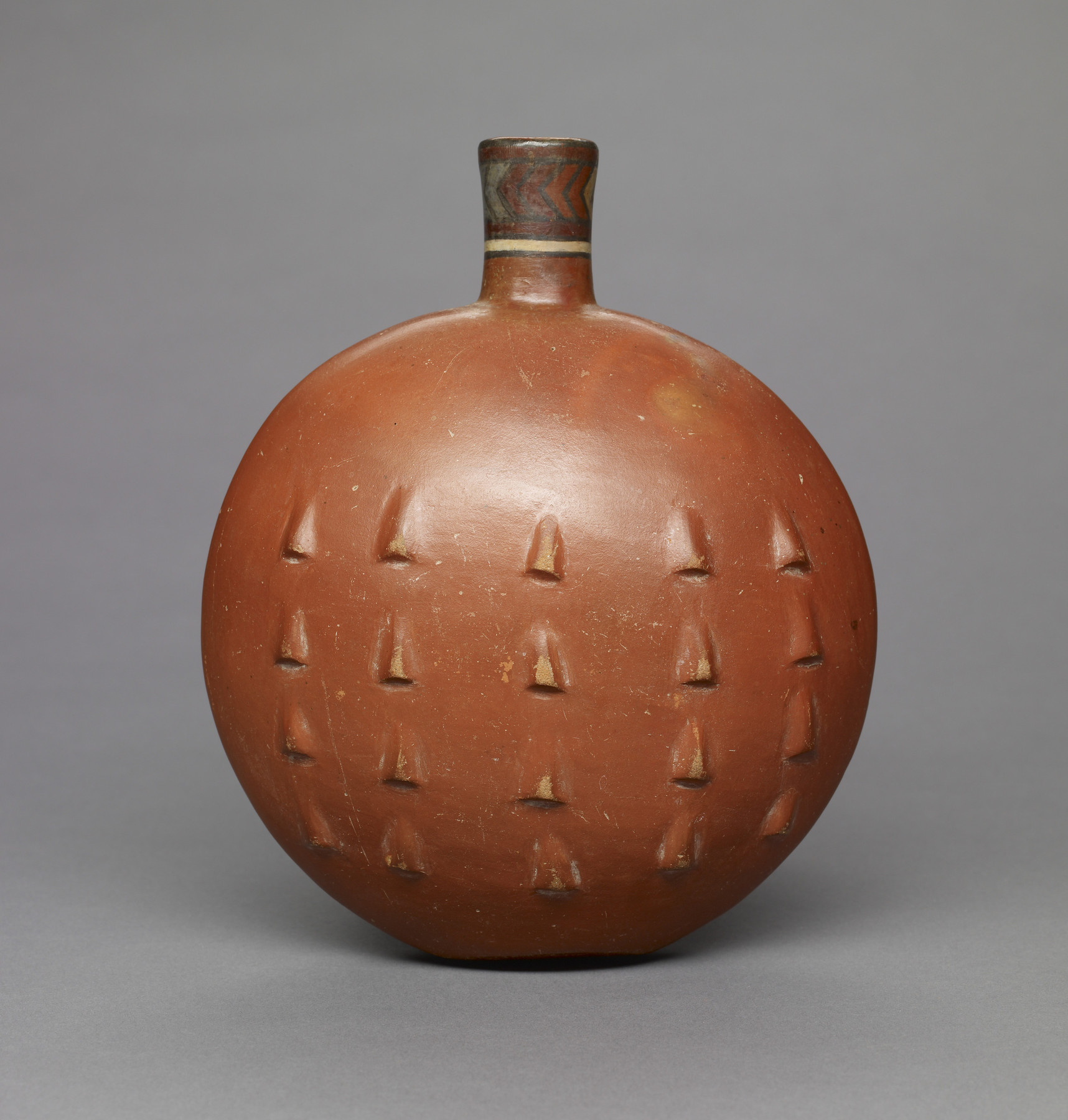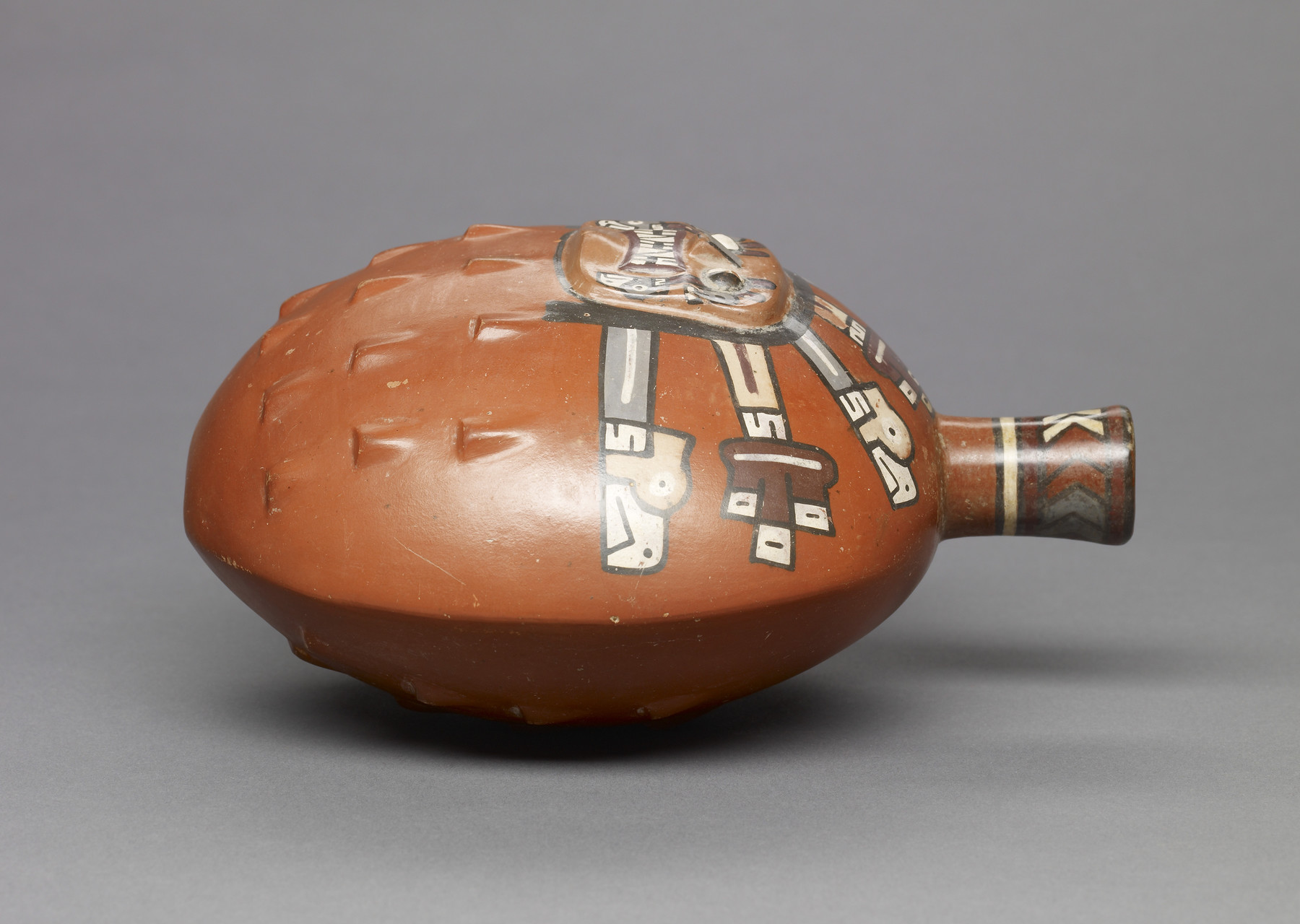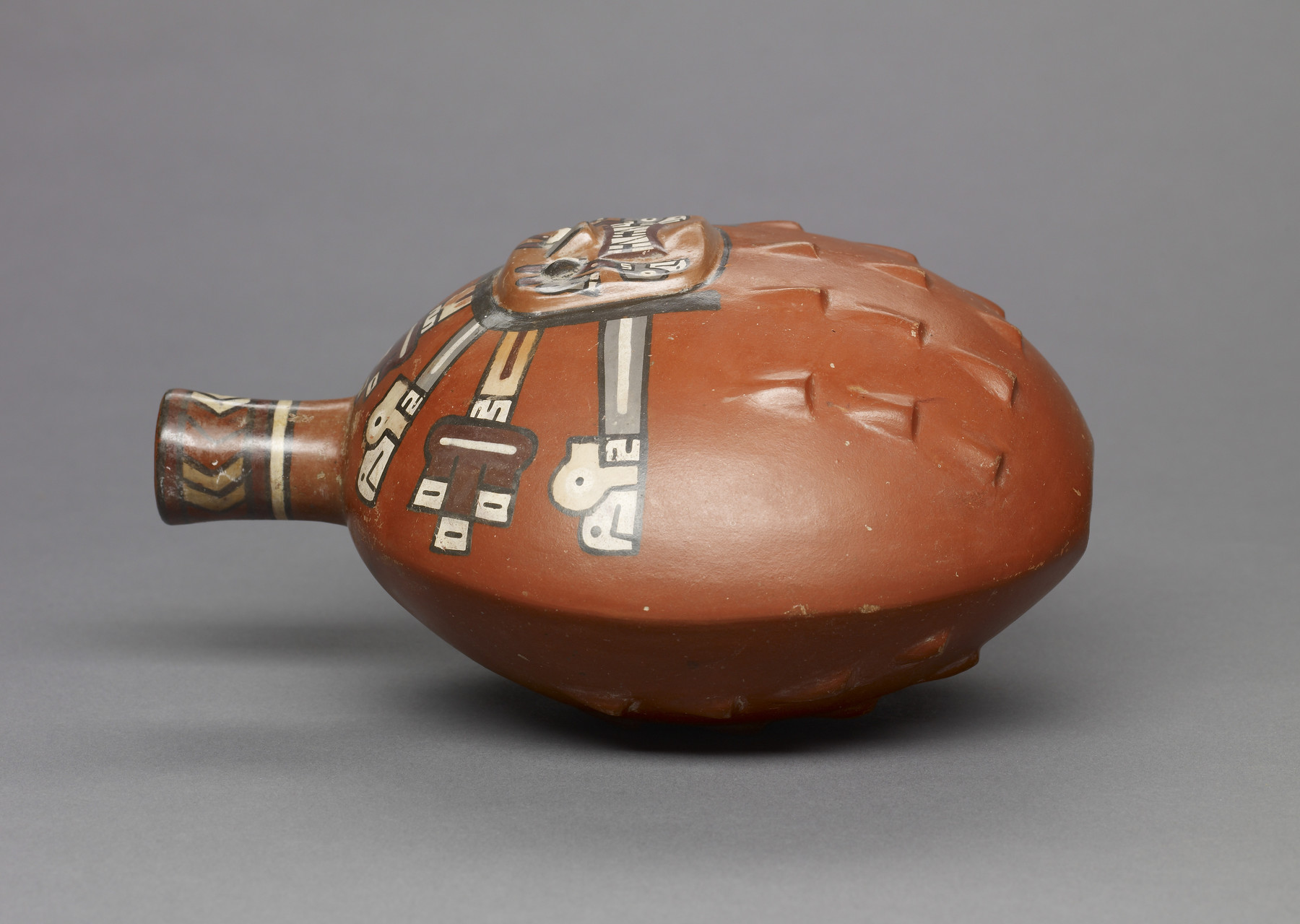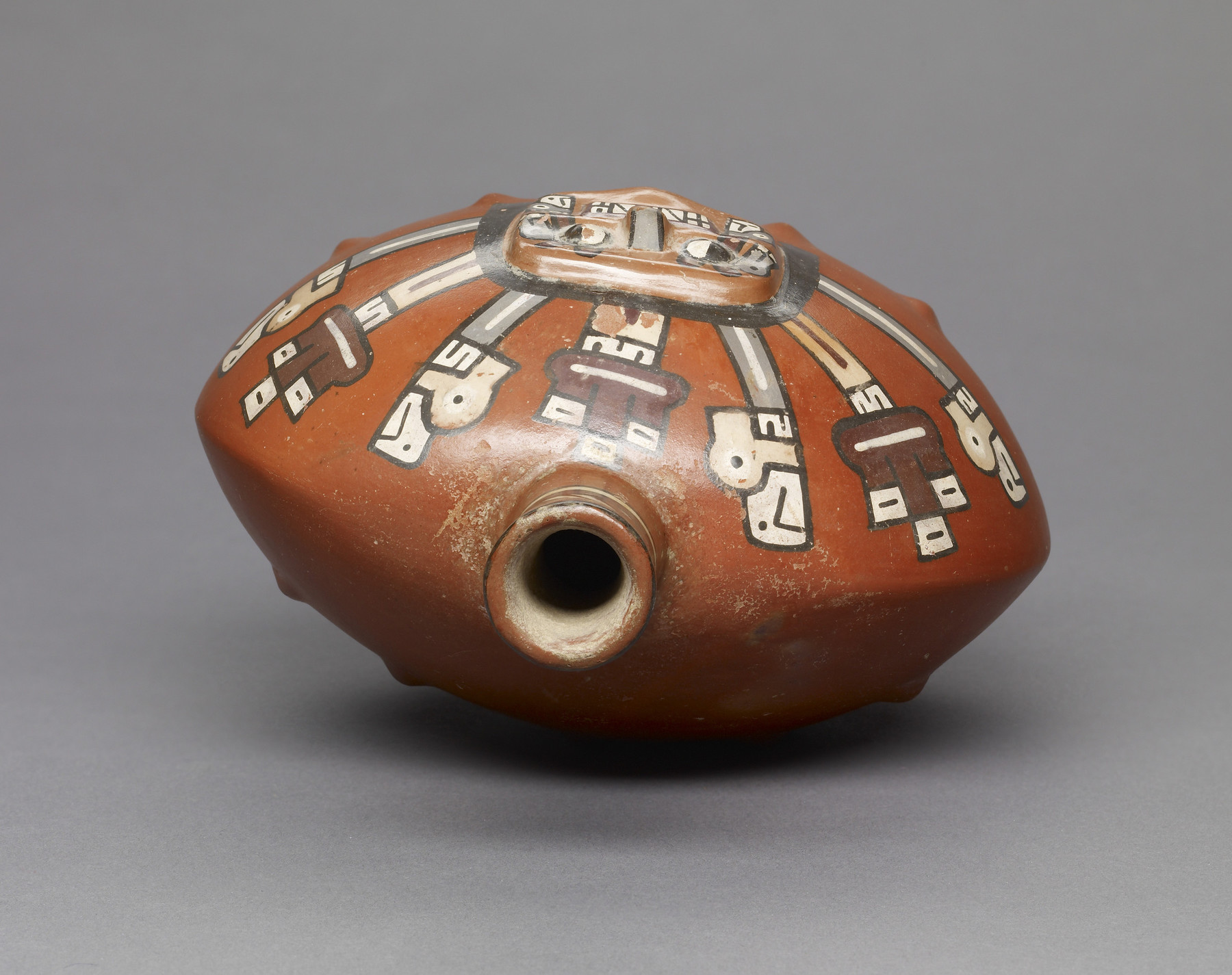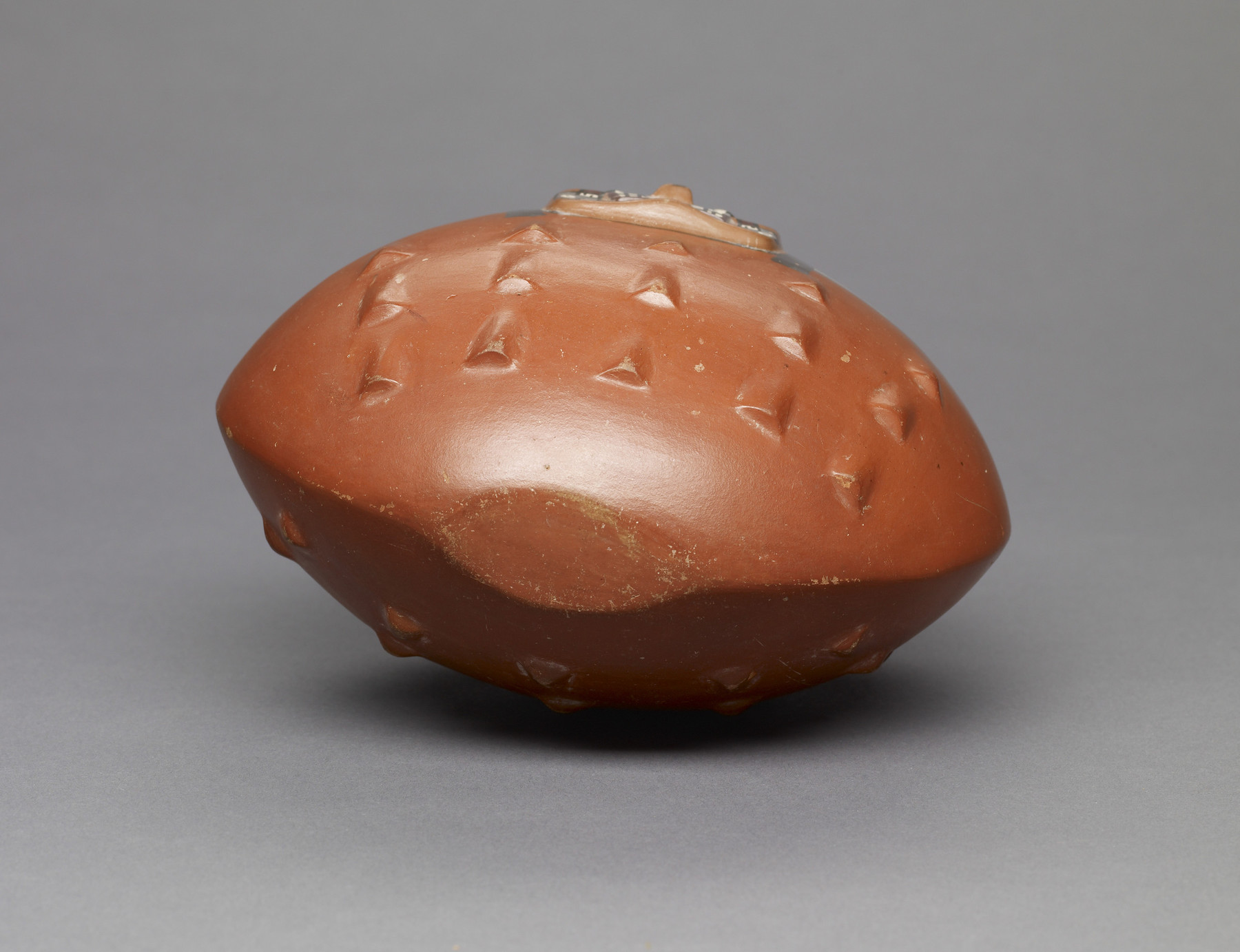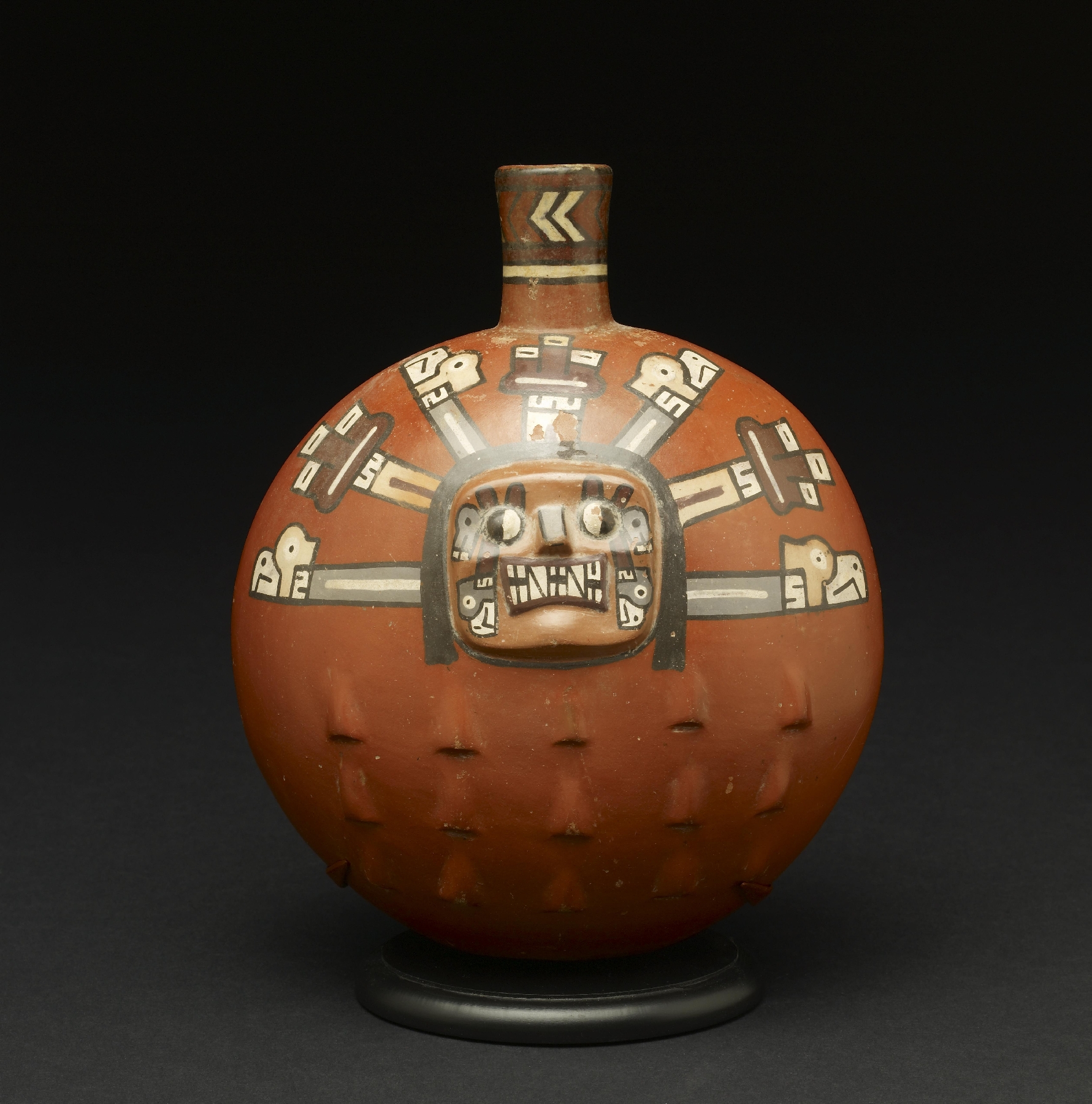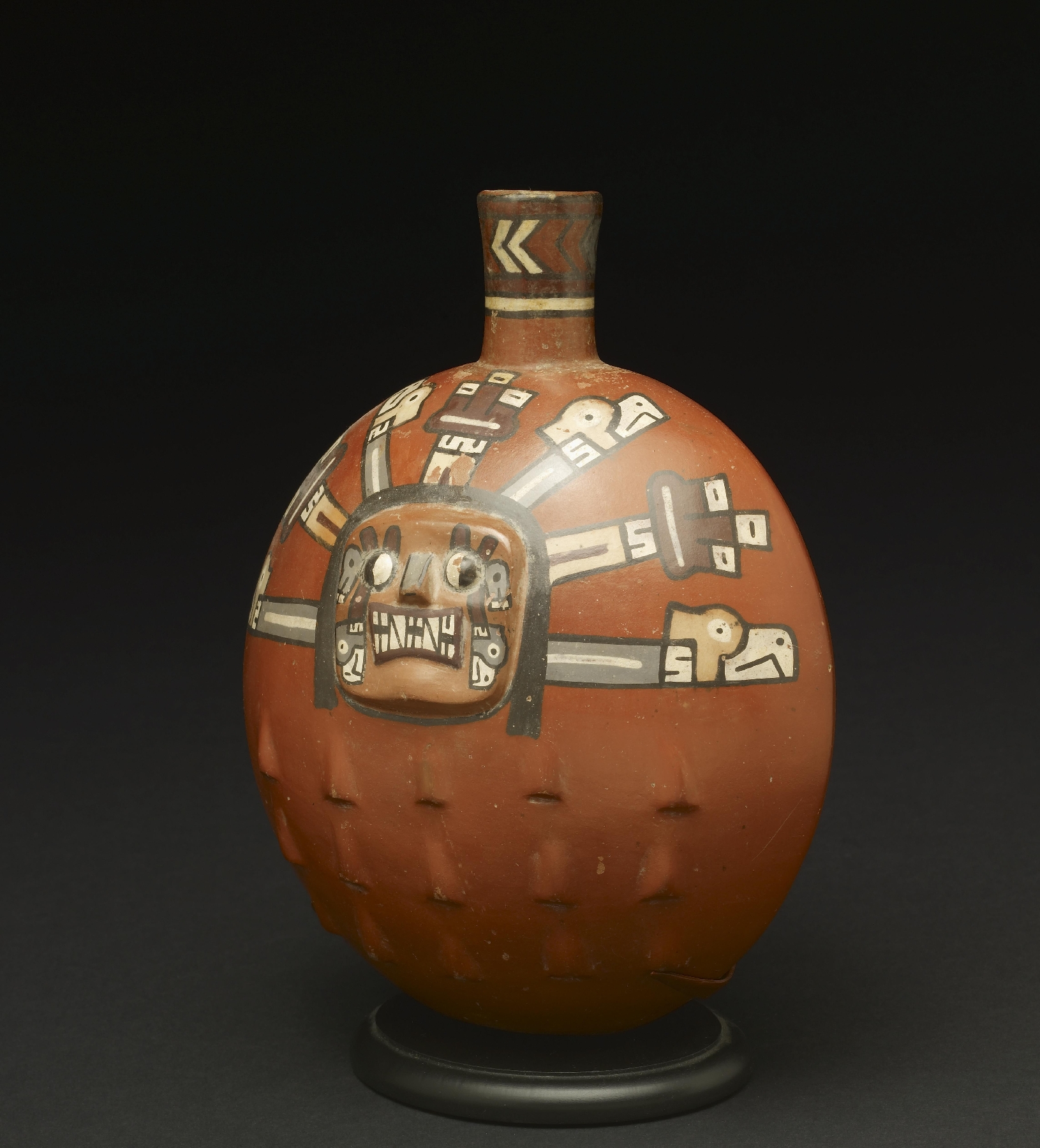Canteen-shaped Bottle
(Ancient Americas )
Following a period of ruinous droughts caused by changes in the Humboldt Current beginning before 600 CE, major sociopolitical changes occurred throughout Peru and northern Bolivia. New centers arose in the highlands that were better adapted to deal with significant environmental changes than were the Moche and Nazca coastal societies. The newly dominant states, Tiwanaku (Tiahuanco) in northern Bolivia and Wari (Huari) in Peru's southern highlands, re-oriented the Andean political and ideological terrain. Novel interpretations of pan-Andean social and religious ideals were now expressed by new aesthetics and iconographic configurations that reinvigorated the artistic landscape. Tiwanaku and especially Wari art styles share a preference for iconic obfuscation achieved by geometric abstraction, yet the artists followed established templates to ensure comprehension of the underlying narrative. The primary Wari/Tiwanaku iconographic program features the frontal depiction of what has been interpreted as a principal deity (the so-called Frontal Staff Figure) holding a staff in each hand and flanked by winged attendants. The most famous rendering of this being is carved on the front of the massive Gate of the Sun at Tiwanaku, Bolivia. On this ceramic bottle, the artist chose to eliminate the body and render only the supernatural being's head although she/he included the typical condor-headed "tears" and rays emanating from the head. The rays likely refer to the spiritual power of the being, implied here by condor heads and tail feathers but elsewhere, such as on Tiwanaku's Gate of the Sun, by puma heads. The ritualistic nature of this vessel's imagery is reinforced by its modeled form, which makes reference to a stylized Spondylus shell. This valuable commodity, found primarily in deep waters off the Ecuadorian and Peruvian coasts, indicated high status and pertained to spiritual themes of sacrifice and spirit transformation throughout the ancient Andes.
Provenance
Provenance (from the French provenir, 'to come from/forth') is the chronology of the ownership, custody, or location of a historical object. Learn more about provenance at the Walters.
Owned by Leonard Kalina; purchased by John G. Bourne, Santa Fe, New Mexico, between 1990 and 1999; given to Walters Art Museum, 2013.
Exhibitions
| 2018-2019 | Transformation: Art of the Ancient Americas. The Walters Art Museum, Baltimore. |
| 2012-2013 | Exploring Art of the Ancient Americas: The John Bourne Collection Gift. The Walters Art Museum, Baltimore; Frist Center for the Visual Arts, Nashville. |
Conservation
| Date | Description | Narrative |
|---|---|---|
| 8/27/2018 | Examination | examined for exhibition |
| 8/27/2018 | Examination | The neck has been restored and overpainted. The extent of restoration underneath the paint is unknown. The rest of the bottle is complete. |
| 8/27/2018 | Treatment | examined for exhibition; other |
| 8/27/2018 | Treatment | The bottle was examined for exhibition. Examination with ultraviolet radiation indicated that the vessel is whole with the exception of the neck. Overpaint on the neck was partially removed revealing that the neck has either previously broken and been reassembled or is constructed from other fragments. |
Geographies
Peru, South Coast (Place of Origin)
Measurements
H: 7 x W: 5 11/16 x D: 3 5/8 in. (17.78 x 14.48 x 9.14 cm)
Credit Line
Gift of John G. Bourne, 2013
Location in Museum
Not on view
Accession Number
In libraries, galleries, museums, and archives, an accession number is a unique identifier assigned to each object in the collection.
In libraries, galleries, museums, and archives, an accession number is a unique identifier assigned to each object in the collection.
2009.20.105


